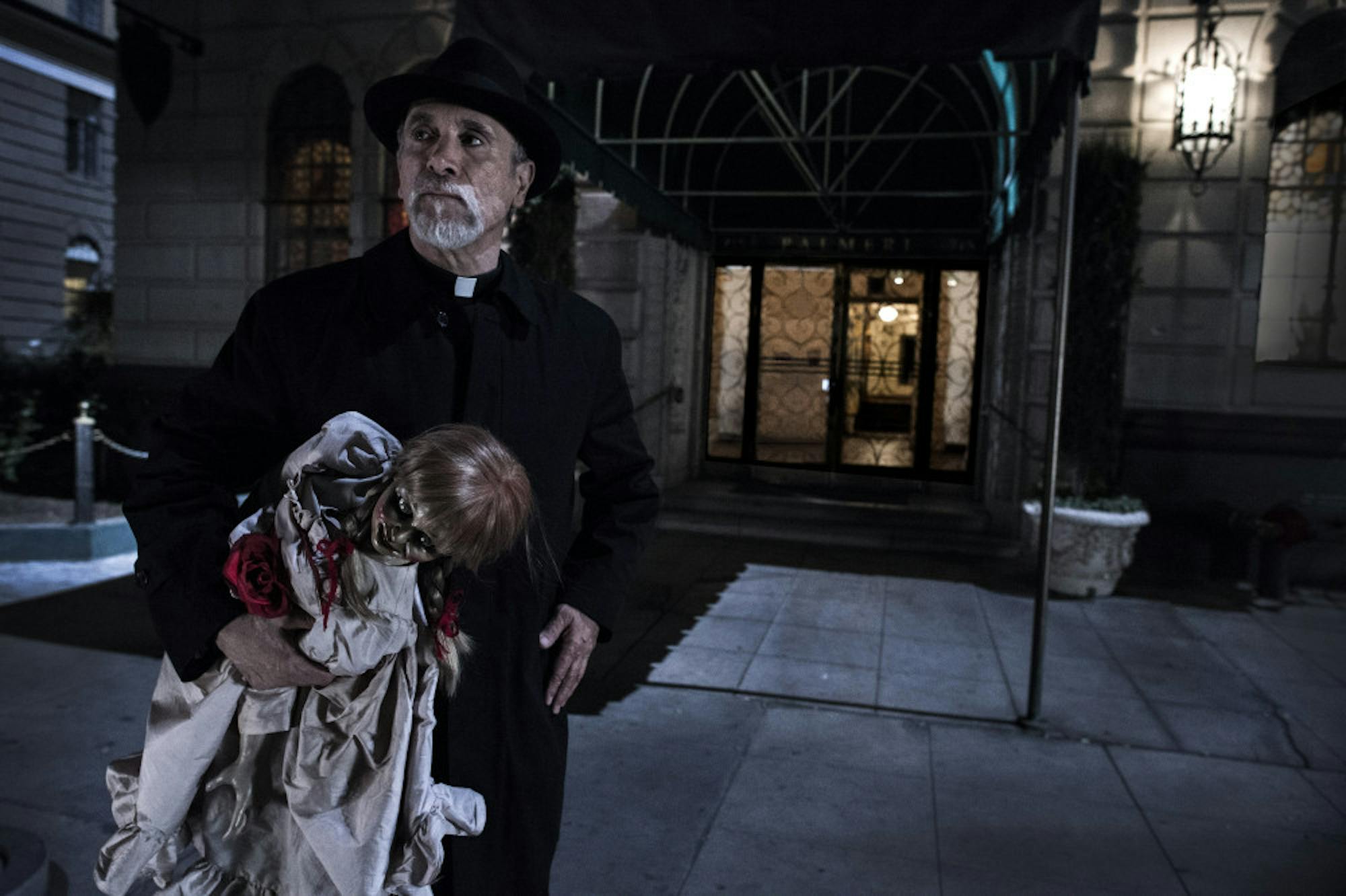Some stories are better left untold, and some subplots are better left in the background. While fans of “The Conjuring" (2013), the film which first introduced audiences to the haunting, evil-eyed doll which stars in its spin-off -- might wish otherwise, the tale behind “Annabelle,” would have been better left to the imagination.
The movie, which hit theaters on Oct. 3, opens with Mia Gordon (Annabelle Wallis) and her husband John (Ward Horton) navigating the struggles of beginning a life together, and preparing for the arrival of their unborn daughter. After a fight, John gives Mia a rare vintage doll to add to her collection, but the doll’s appeal is soon ruined. That night, the couple is attacked by members of a satanic cult -- the daughter of their next door neighbors, Annabelle Higgins (Keira Daniels) and her vicious boyfriend. The attackers perish in the assault and Mia and John escape shaken, but relatively unharmed. In their act of violence, however, the cult members succeed in planting something malignant in Mia’s vintage doll -- something that Mia, with the help of her friend Evelyn (Alfre Woodard), must stop before it destroys her family.
The real problem with “Annabelle” is that it lacks cohesion. The plot is so full of red herrings -- both thematic and narrative -- that each twist and turn feels random, as if the filmmakers had so many ideas that they ended up throwing several together. At times the film feels like a historical nod to doomsday cults, or a summons back to faith in the church or a critique of domesticity. In reality, however, it is none of those things. Perhaps if "Annabelle" focused on just one or two of these elements, borrowing less from past films, the result would be less generic.
In terms of scariness, fans of “The Conjuring" will likely find this film underwhelming and disappointingly unoriginal. Whereas “The Conjuring” combined traditional stock tricks with genuine suspense to make a compelling film, "Annabelle" relies too much on short, over-strained tension scares to impress horror fans.
“Annabelle” also somewhat neglects the aspect that made the original Annabelle story so creepy in the first place -- the doll itself. Admittedly, the doll is pretty scary-looking, and there are plenty of shots where audience members find themselves simply staring at Annabelle, waiting for her to suddenly come alive. But the main focus of “Annabelle” is curtailed to the demon that manipulates the doll and the lingering spirit of the Higgins’ crazed daughter. The emphasis on these two figures obliterates the eerie conception of the doll as an inanimate figure with a mind of its own and instead turns it into a mere vessel, controlled by less mysterious, less intriguing forces.
Possibly as an attempt to recapture Annabelle’s creepiness, the filmmakers do an interesting job of turning all things domestic and motherly into something menacing and dangerous, drawing inspiration from films like “Rosemary’s Baby” (1968) to do so. Mia’s sewing machine mysteriously starts running on its own. The oven turns on by itself and starts a house fire. Mia’s baby stroller, astonishingly similar to Rosemary’s iconic black pram, suddenly becomes prone to being hit by a truck. All these things seem an ironic twist on Father Perez’s (Tony Amendola) words to Mia -- only mothers share God’s blessed gift of creation.
The film has many faults, but its casting, for the most part, is not among of them. Wallis gives an admirable performance as the story’s frightened but endearing protagonist, especially when one considers how much time she spends alone onscreen independently sustaining the film. Horton, as Mia’s husband, also does a decent job with the role given to him. Woodard’s character is somewhat disappointing, but the actress can’t really be blamed; beyond some very superficial character development, Evelyn is nothing but a pure “Magical Negro” archetype. (Yes, from the very moment that Evelyn explains that God let her survive a fatal accident because He had another purpose for her, one can be sure that that purpose will have something to do with saving the white family at the center of the film.)
In short, those still looking for a Halloween season horror that will leave an impression should hold out for a little while longer. Don’t waste your money; just rent “The Conjuring” instead.
'Annabelle' a disappointing follow-up to 'The Conjuring'

While fans of "The Conjuring" may be excited about the spin-off film, "Annabelle" fails to impress.
Summary
Don't waste your money on "Annabelle" as your Halloween horror flick.
2 Stars





